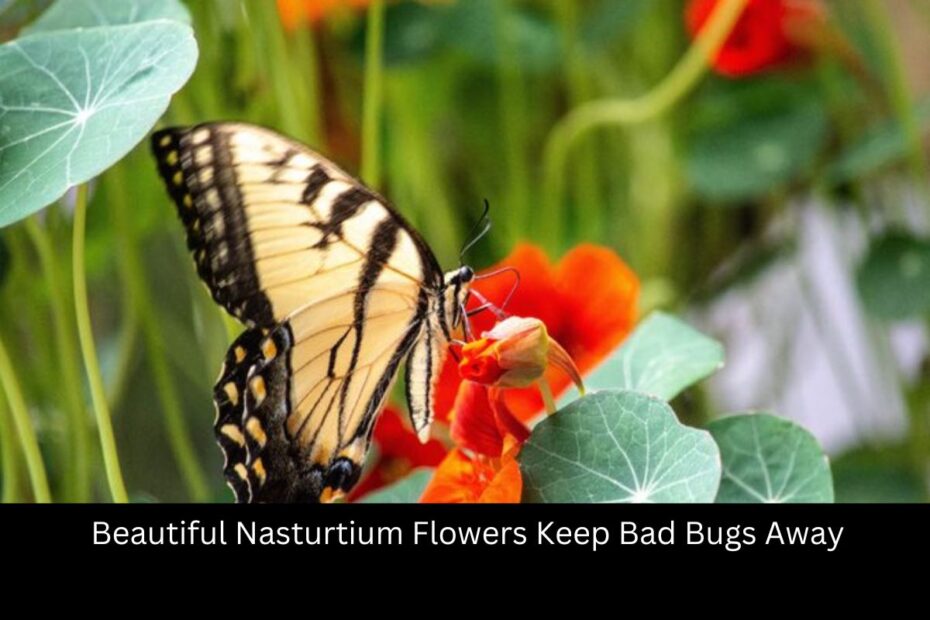Tropaeolum majus, more commonly known as nasturtiums, are not only stunningly beautiful but also extremely helpful to your yard. The brilliant, colorful blossoms and distinctive foliage of these plants have the potential to improve the beauty of a garden while also serving utilitarian reasons, such as warding off pests. Nasturtiums can be an extremely beneficial addition to your garden in the following ways:
Benefits of Nasturtiums
Pest Repellent:
Nasturtiums are effective at luring aphids away from plants that are more susceptible to attack. The pests have a preference for nasturtiums, which lessens the influence they have on your other crops.
Whiteflies: The pungent odor of nasturtiums can be an effective means of warding off whiteflies, which are a common problem in gardens.Cabbage Worms and Beetles: Because nasturtiums have the ability to ward off pests such as cabbage worms and beetles, they are an excellent companion plant for foods such as broccoli and cabbage.
Attract Beneficial Insects:
There are also beneficial insects that are drawn to nasturtiums, such as ladybugs and lacewings, which feed on aphids and other pests that are destructive to plants. This contributes to the establishment of a healthy ecology in your garden.
Edible Flowers and Leaves:
A peppery flavor can be added to salads and other foods by using nasturtiums, which can be consumed in both their blossoms and their leaves. Not only are they beautiful to look at, but they also serve a vital purpose as a culinary herb.
Also see :-8 Baby Names Derived From Hindu Mantras With Meaning
Ground Cover:
Since nasturtiums have a history of spreading their growth, they are an ideal choice for ground cover. Together, they have the potential to prevent soil erosion and weed growth.
Easy to Grow:
The nasturtium is a robust and versatile plant that can flourish in a wide range of soil types and environmental conditions. It is also possible to cultivate them from seeds that are planted directly in the garden, and they require a modest level of upkeep.
How to Grow Nasturtiums
Planting:
Because nasturtiums like full sun but can tolerate partial shadow, it is important to select a place that receives plenty of sunlight.Planting should be done in soil that drains effectively. They are not particular about the fertility of the soil, which makes them an excellent choice for garden locations that are less than ideal.
Seeds can be planted either directly into the garden or started indoors after being planted. Spread the seeds out at a distance of around 8 to 12 inches to enable for their growth to spread out.
Watering:
Keep the soil moist at all times, but avoid letting it become soggy. After they have established themselves, nasturtiums are typically resistant to drought.
Maintenance:
Ensure that spent flowers are deadheaded in order to promote continuing blooming. Although nasturtiums normally require just minimal attention, it is important to check for pests on a regular basis.
Companion Planting:
Plant nasturtiums in close proximity to crops that are prone to being attacked by pests, such as tomatoes, cucumbers, and spaghetti squash. They are wonderful companions and can assist in warding off pests that may be attacked by these plants.
